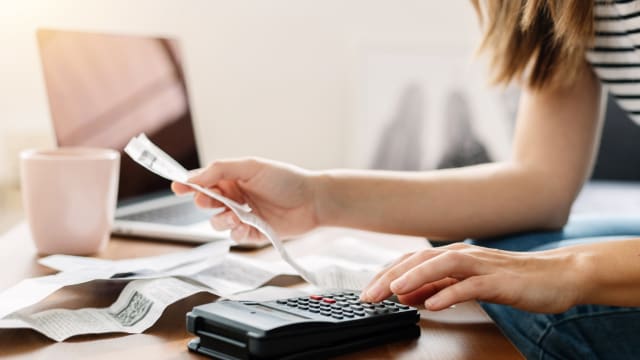What Are Utilities? [2024]
Introduction
Many renters, whether they’re embarking on their first lease or are seasoned renters, tend to overlook or underestimate the impact of utility expenses. These essential services, ranging from electricity to internet, can accumulate to an average monthly cost of $428.
But fear not, intrepid renter, as it’s our mission to equip you with the knowledge and tools you need to efficiently manage and set up your apartment utilities. From understanding what utilities are and who’s responsible for paying them, to estimating costs and discovering how to save on these essential services, we’re here to help you prep like a pro.
What Are Utilities?
Utilities are the essential services that power our appliances, keep our showers warm, and our homes connected to the world.
Let’s break down what these include and why they’re so crucial to our everyday lives.
Electricity
Electricity is the lifeblood of modern homes, powering everything from our lights and refrigerators to our computers and TVs. Without it, we’d literally be left in the dark. It’s what keeps our homes bright, our food fresh, and our entertainment devices running. Whether you’re a night owl or an early bird, electricity ensures your home adapts to your lifestyle, not the other way around.
Water
Water is a fundamental utility that’s easy to take for granted. It’s essential for drinking, cooking, cleaning, and bathing. Imagine a day without a morning shower or being unable to flush the toilet - not a pleasant thought, right? Access to clean water is not just about convenience, it’s about health and hygiene.
Gas
Gas is commonly used for heating and cooking in many homes. It provides instant heat and is often preferred for cooking due to its controllability and the even heat distribution it offers. On a cold day, gas heating can quickly make your home cozy and warm. Plus, there’s something about cooking on a gas stove that just feels right for many culinary enthusiasts.
Internet
In today’s connected world, the internet has become a utility nearly as essential as water or electricity. It’s our gateway to information, entertainment, and staying in touch with loved ones. Whether you’re working from home, streaming your favorite show, or just browsing the web, a reliable internet connection has become a cornerstone of modern living.
Waste Pickup
Last but certainly not least, waste pickup services ensure that our homes remain clean and sanitary. Regular trash and recycling pickups help manage waste, reducing the risk of pests and contributing to a cleaner environment. It’s a service that works best when it’s so seamless, you barely have to think about it.
Who Pays for Utilities?
![What Are Utilities? [2024]](https://res.cloudinary.com/apartmentlist/image/fetch/f_auto,q_auto,t_renter_life_article/https://images.ctfassets.net/q131gehs2pma/7GfWu96HoZIosdLB5ryG5l/2de67f4a227321c7d42d0faef684bf5b/anv__42_.png)
So, who’s responsible for keeping the lights on, the water running, and the internet buzzing?
In some scenarios, utilities such as water, gas, and electricity might be included in your rent, offering a hassle-free way to manage monthly expenses without the worry of separate bills. This arrangement is particularly common in multi-unit buildings where dividing up utility costs could get complicated. However, don’t start celebrating just yet—while this might seem like an all-inclusive vacation from utility woes, it often means your rent is higher to cover these costs.
On the flip side, many landlords pass the baton of utility payments to tenants, making you responsible for setting up and paying for these services directly. This method is more common in single-family rentals and condos, or when landlords aim to encourage conservation among tenants. After all, if you’re paying for your water use, you might think twice about that hour-long shower.
And then there’s the internet, cable, and phone services—welcome to the wild west of utilities. Almost universally, these are the tenant’s responsibility to set up and manage, offering the freedom to choose your providers but also the responsibility of another bill.
Before you sign your lease, equip yourself with the right questions to avoid any utility surprises:
- Are any utilities included in my rent? If so, which ones?
- Can you provide the average monthly cost for utilities here?
- How are shared utilities like water and garbage handled?
- Who is the current provider for each utility, and how do I set up service?
- Are there any energy-efficient features in the apartment to help reduce utility costs?
Remember, when it comes to utilities, the best offense is a good defense—or in this case, asking the right questions upfront!
Estimating and Managing Utility Costs
Understanding the average costs of utilities and what factors influence these costs is your compass in the vast ocean of apartment living expenses. It can also determine how much you can afford to pay for your apartment.
On average, Americans pay an average of $429.33 for utility costs. For smaller apartments, however, you can expect to pay between $100 to $300 per month.
Of course, your payment will depend on several facotrs, including the size of your apartment, the climate of your location (pirates in colder climates might spend more on heating), the efficiency of your appliances, and even the rates set by your utility providers.
Setting Up Utilities in Your New Apartment
![What Are Utilities? [2024]](https://res.cloudinary.com/apartmentlist/image/fetch/f_auto,q_auto,t_renter_life_article/https://images.ctfassets.net/q131gehs2pma/4HHraih88IuVt8NOqusd4V/8f8f47f8bf6522bee1af64cf7eca54f5/anv__44_.png)
If you’re moving into a place where your landlord is not in charge of paying utilities, you’ll likely have to set them up on your own. Here’s a step-by-step list on how to get your utilities up and running.
Step 1: Find the Right Providers
First things first, you’ll need to find out which utility providers are available in your area. A quick Google search or a chat with your landlord will reveal the names of the electricity, gas, water, and internet service providers that cater to your new address.
Step 2: Sign Up
Once you’ve identified your providers, it’s time to sign up. This can often be done online, thankfully. Visit each provider’s website and look for the “new customer” or “start service” section. Be prepared to provide your personal details, including your new address and the start date for the service. Be as accurate as possible to avoid any service delays.
Step 3: Choosing Your Billing Preferences
During the signup process, you’ll be asked about your billing preferences. Do you prefer the ease of autopay, where your bills are automatically deducted from your account, or would you rather receive a paper bill in the mail? Consider going paperless if you’re keen on steering towards an eco-friendly lifestyle. It’s also a good idea to set up online account access, allowing you to view your usage and manage your account from the comfort of your couch.
Step 4: Inquire About the Unknown
Before you finalize your utility setup, make sure to ask about any hidden fees, such as deposits, connection fees, or early termination fees. These can vary by provider and can sometimes catch you off guard. Knowing these details upfront will help you budget more effectively and avoid any unpleasant surprises.
Step 5: Confirm and Double-Check
Once you’ve signed up for your utilities and chosen your billing preferences, take a moment to confirm everything with your service providers. Ensure that your start dates align with your move-in date to prevent any lapses in service.
Step 6: Keep a Log
Finally, keep a record of all your utility account numbers, customer service numbers, and any other relevant information. This will be invaluable if you need to contact your providers for any reason.
And there you have it! By following this utility setup checklist, you’ll be well on your way to a hassle-free transition into your new apartment.
Conclusion
By understanding what utilities you need, who is responsible for paying them, how to estimate and manage their costs, and setting them up efficiently in your new apartment, you’re well-equipped to make your renting experience as smooth as possible.
With this knowledge, you’re better equipped to budget wisely and choose an apartment that suits your financial needs. Our AI-powered apartment-finding platform can help you find the perfect rental that aligns with your utility needs and preferences.
Whether you’re looking for all-inclusive packages or the flexibility to choose your providers, we have options that fit your lifestyle. Start your search today.
FAQs
Can I switch utility providers if I find a better deal?
Absolutely! If your lease agreement and local regulations allow it, you can certainly shop around and switch to a utility provider that offers better rates or service. Just make sure to check for any termination fees with your current provider and understand the new provider’s terms.
What happens if I don’t set up my utilities before moving in?
Walking into a dark, cold, or internet-less apartment is no way to start your renting journey. Not setting up utilities in advance can lead to discomfort and inconvenience. Contact providers at least two weeks before your move-in date to ensure everything is up and running when you arrive.
Are there any programs to help manage utility costs for renters?
Yes, many areas offer programs to assist renters with their utility bills, especially for those with limited incomes. Look into government assistance programs, subsidies, or provider discount plans designed to make utilities more affordable.
How can I reduce my utility bills?
Being mindful of your consumption is key. Simple steps like turning off lights when not needed, using energy-efficient appliances, setting a reasonable temperature for heating/cooling, and fixing leaks promptly can significantly lower your bills.
Do I need renter’s insurance to cover utility issues?
While renter’s insurance doesn’t cover utility bills, it can cover damages caused by utility issues, such as water damage from a burst pipe. It’s a smart investment to protect your belongings and for peace of mind.
Can my landlord increase the rent if utility costs go up?
This depends on your lease agreement. If utilities are included in your rent, your landlord might be able to adjust your rent in line with rising utility costs, but typically only after your current lease term ends. Always read your lease carefully and discuss any concerns with your landlord.
What’s the best way to track utility expenses?
Consider using budgeting apps or software that allow you to categorize and monitor your utility expenses. Keeping an eye on your usage can help identify areas for savings and ensure you’re not caught off guard by seasonal spikes.
Is it better to have utilities included in the rent?
This depends on your personal preference and lifestyle. Having utilities included can simplify budgeting and reduce the number of bills to manage, but it might also mean paying a slightly higher rent. Evaluate what’s most important to you in your renting situation.




![What Are Utilities? [2024]](https://res.cloudinary.com/apartmentlist/image/fetch/f_auto,q_auto/t_renter_life_cover_1200/https://images.ctfassets.net/q131gehs2pma/4fNYD40Z4YdyjySLMlD0yF/91b1f875b449b70470322d317c443127/anv__40_.png)